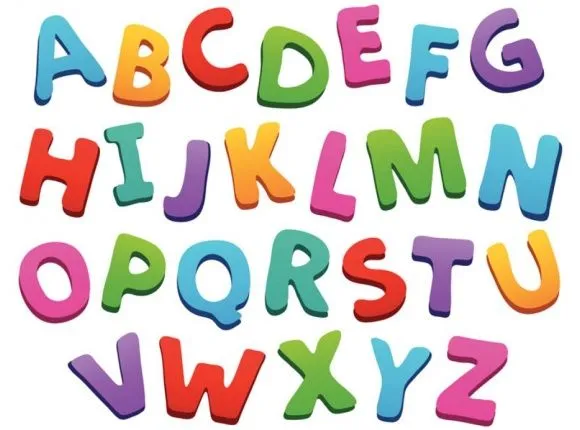ABC's of the I/DD World
- News

What Do All These Acronyms Mean?
SLP, DSP, ABA, ICF, and LISW. It sounds more like a random assortments of letters your child might say before they’ve memorized the alphabet song, but for many families, each of those abbreviations has its own very important meaning. Some abbreviations like DD (developmental disability) and I/DD (intellectual and developmental disability) are widely known, but some are less obvious.
When abbreviations, acronyms, and jargon are said without explanation, it can leave families confused and in need of a dictionary. There are plenty of glossaries available online, but many of them create more questions than they answer by not explaining the meaning behind the term. So, we compiled a list of commonly confused abbreviations and a short explanation of what it actually means.
Job Titles
DSP (direct support professional): DSPs act as a direct caregiver, and often friend, to people with (I/DD). They work in residential and program settings.
BT (behavior technician): BTs provide evidence-backed treatment and teach social skills, communication, coping skills, and job readiness. They use the principles of ABA therapy and individualized plans to accomplish these goals.
BCBA (board certified behavior analyst): BCBAs create ABA plans for individuals with autism and guide BTs.
PIT (program intervention technician): Similar to a BT in many ways, PITs teach individuals various skills.
LISW or LSW (license independent social worker or licensed social worker): Social Workers at Boundless can have many jobs. Some provide counseling while other connect families to additional resources.
PRN (pro re nata): Latin for “as the situation demands” or “as needed.” This abbreviation can refer to many positions and means the employee picks up shifts as needed.
QIDP (qualified intellectual disabilities professional): QIDPs are responsible for integrating, coordinating and monitoring each client’s active treatment in an ICF setting.
SSA (service and support administrator): case managers for county boards of developmental disabilities.
Tools and Treatments
ABA (applied behavioral analysis): A flexible system to understand and change behavior in those with autism. It is adapted to meet the needs of each individual and is led by board certified BAs and BTs.
AAC (augmentative and alternative communication): This includes all forms of communication (other than oral speech) that are used to express thoughts, needs, wants, and ideas.
AT (assistive technology): Technology used by individuals with disabilities to perform activities that might otherwise be difficult.
IEP (individualized education plan): A written plan developed with teachers, administrators, and parents to ensure that a child with a disability who is attending a public elementary or secondary educational institution receives specialized instruction and related services.
ISP (individualized support/service plan): Like an IEP, but for activities outside of public school, including a private school. It is the written details of the supports, activities, and resources required for the individual to achieve personal goals.
OT (occupational therapy): OT is an intervention to develop or maintain the meaningful activities in one’s life. Occupational therapists, also called OTs, are highly trained healthcare professionals who practice OT with a doctorate degree.
PT (physical therapy): PT is similar to OT but is more targeted to movement instead of activities. Similarly, physical therapists are called PTs, and the associated degree is also a doctorate.
SLP (speech and language pathology): SLP assesses and treats speech, language, social communication, cognitive-communication, and swallowing disorders in children and adults. Speech and language pathologists are also called SLPs.
ICF (intermediate care facility): a residential facility for adults with I/DD. Providers are responsible for all aspects of care for the individual, including financial matters, transportation, rehabilitation, and medical needs.
SL (supported living): SL refers to a range of services and community living arrangements designed for individuals with disabilities and their families to support disabled citizens to attain or retain their independence within their local communities.
MSY (multi-system youth): MSY is a program for young people supported by multiple systems. The Boundless MSYs, for example, support young people in crisis with input and support from protective services, mental health and addiction services, developmental disabilities services, and/or juvenile court.
Other Organizations
CARF (Commission on Accreditation of Rehabilitation Facilities): CARF is an independent, nonprofit organization that provides accreditation to any type of rehabilitation facility worldwide.
CMS (Centers for Medicare and Medicaid Services): CMS provides Medicaid health insurance to qualifying individuals. CMS also administers Medicare for the elderly, Children’s Health Insurance Program, and the federally facilitated Healthcare Marketplace.
DODD (Department of Developmental Disabilities): The Ohio DODD oversees a statewide system of supportive services that focus on ensuring health and safety, supporting access to community participation, and increasing opportunities for meaningful employment.
CBDD (County Board of Developmental Disabilities): Each county has its own CBDD, which provide assessment, service planning, and coordination to adults and children with developmental disabilities, as well as oversight and assistance to service providers.
DRO (Disability Rights Ohio): DRO is a nonprofit that provides legal advocacy and rights protection to people with disabilities.
Laws and Legally Protected Rights
ADA (Americans with Disabilities Act): Signed into law in 1990, the ADA lays out federal protections for disabled individuals and prohibits discrimination based on a disability. ADA usually includes the ADA Amendments Act of 2008, which expanded on the definition of a disability.
FAPE (free appropriate public education): A FAPE must be provided to all children with disabilities from ages 3 to 21. This includes special education and related services provided at public expense under public supervision and direction, without cost to the family.
LRE (least restrictive environment): LRE is a principle that applies educational settings and means children who get special education should be in the same classrooms as other kids as much as possible.
Learning the many abbreviations and acronyms can feel like learning a whole new vocabulary. While this is far from a complete list of abbreviations in the I/DD world, it provides a good start for understanding the many ABCs of DD.





